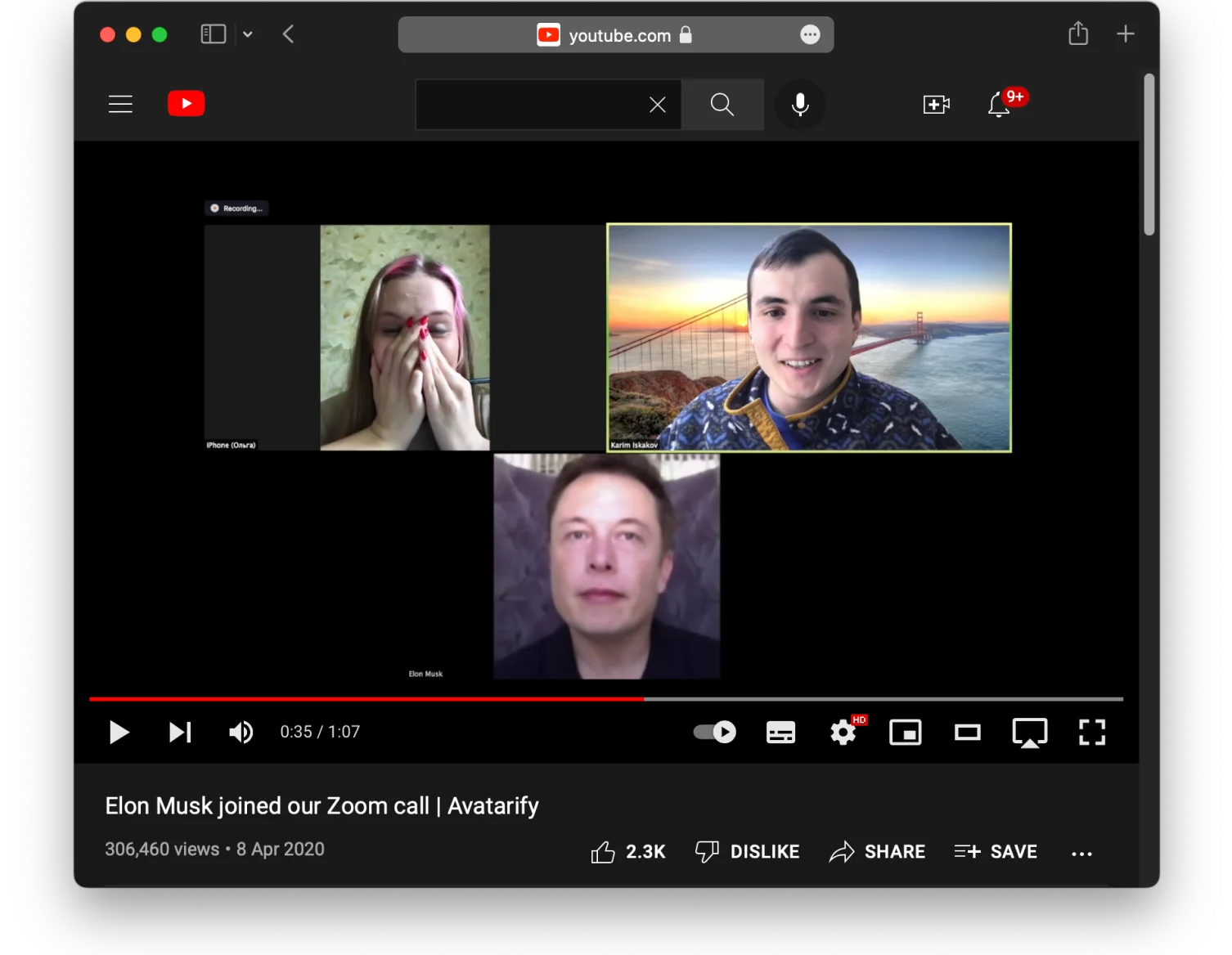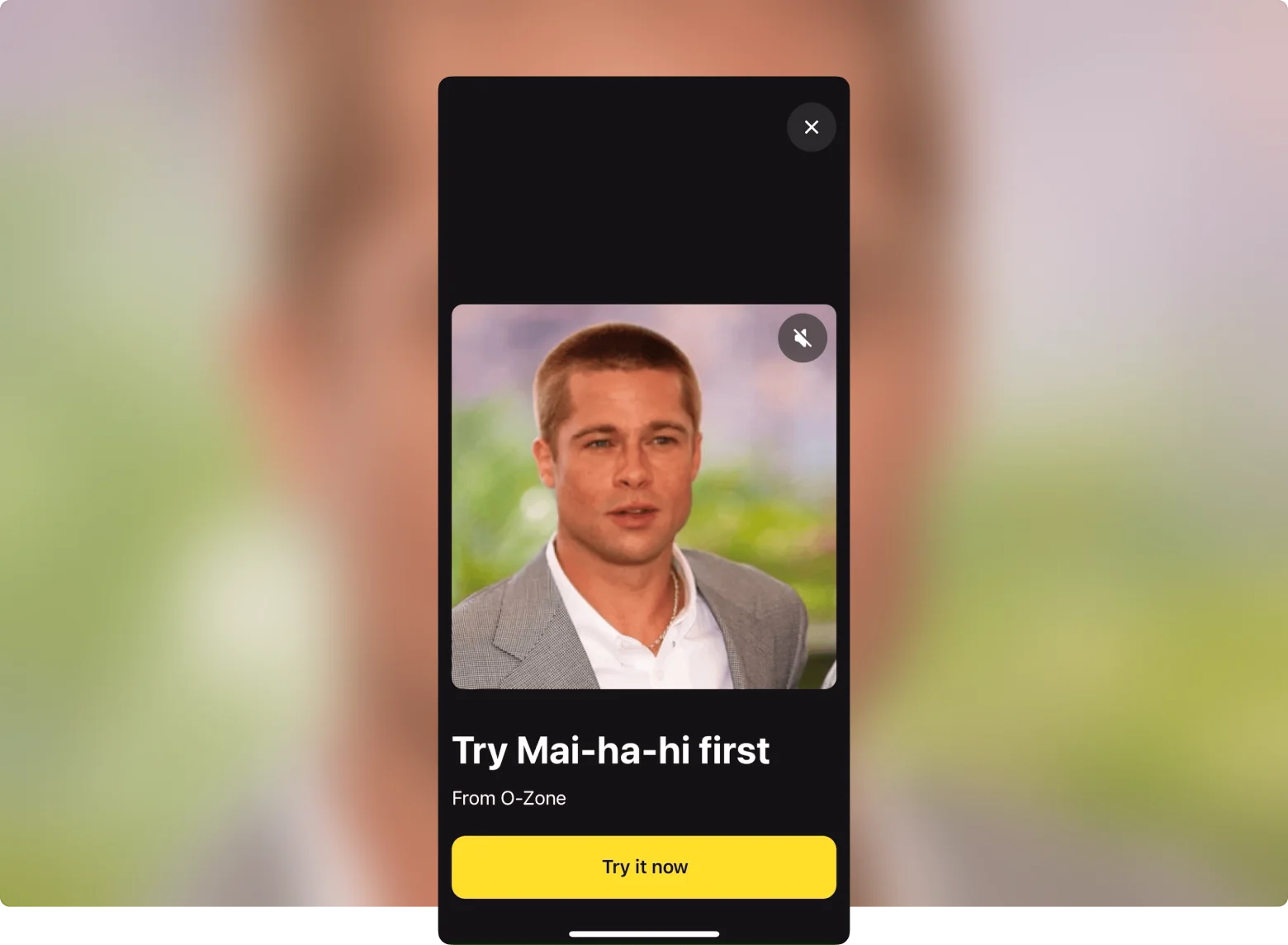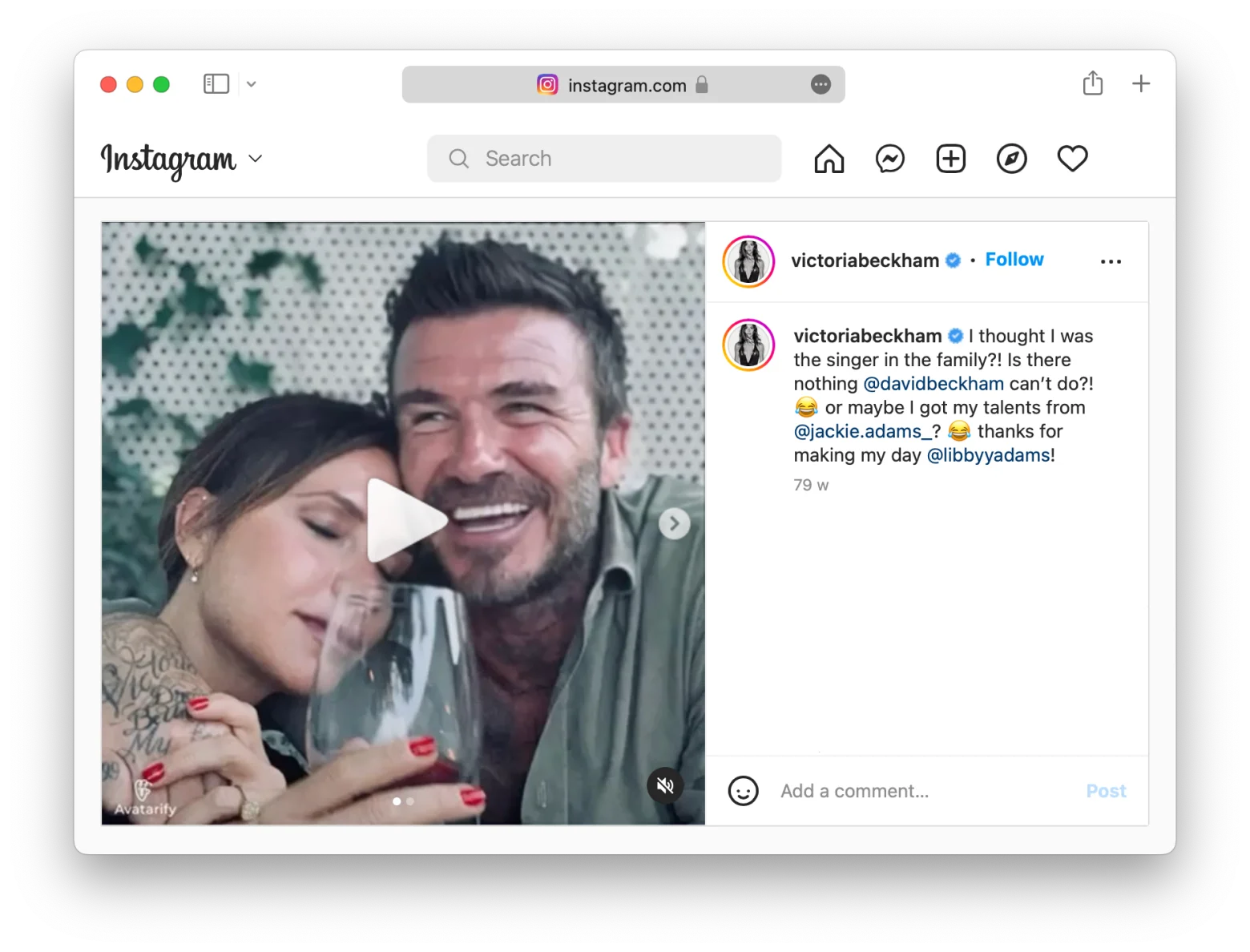SocialKit
Welmi
The story of Avatarify is the story of astounding success that caught its developers completely off guard.
From a joke to an app
It all started in the spring of 2020. Ali, who worked at Samsung at the time as a Computer Vision engineer, decided to amuse his colleagues. He made a deepfake plug-in for Zoom and showed up with the face of Elon Musk at an online meeting. His colleagues were shocked. One of them, Karim, offered to record a video for YouTube, where Elon Musk would accidentally join someone else’s Zoom call.

The video went viral and got more than 300l views on YouTube. It became clear that the plugin made as a joke could turn into a successful product, and Ali decided to seize the opportunity.
He teamed up with Artyom, an iOS developer, and Yegor, a specialist in neural networks for mobile devices.
And this is how the Avatarify app came to life, with not a single dollar invested in its development.
From the “just-to-see-what-happens-next” app to top-1 in the App Store
After the launch in the App Store and making an announcement on TikTok, Avatarify reached 400,000 downloads in just two months with the $0 user acquisition cost, at the same time becoming the top-1 free app in the Russian App Store among all categories.
Countries where Avatarify became top-1 free app in the App Store:







But after a while, the traffic leveled off. It turned out that the product attracted users, but couldn’t retain them – creating content required too much effort: after putting on a celebrity’s face, the user had to come up with their own ideas of what to do next.
So the team changed the concept – they added ready-made songs, as well as celebrities’ movements and facial expressions that could be overlayed on top of the users’ photos to make them look animated.

This resulted in the app becoming Top-1 in the UK App Store for two weeks. Then it also reached first place in the App Stores of France, Germany, South Korea, Japan, and China.

From an indie app to business
In December 2020, the team added monetization. By that time, the app already had around 800k installs. The traffic was high, and this advantage had to be turned into revenue. To monetize the app, they needed a reliable partner, and that’s how they found Adapty. With the help of Adapty, the Avatarify team quickly integrated the in-app purchase infrastructure, started getting accurate subscription data, and now carries out purchases even when the users are offline.
Infrastructure for in-app subscriptions
The Avatarify team saved a month of development by quickly integrating purchases with Adapty and were able to start monetizing just after a week.
Accurate analytics
After the monetization was added, it was time to start purchasing traffic. High-quality analytics is required for this activity to pay off. Adapty analytics for the App Store is 99.5% accurate, so the Avatarify team was able to make marketing decisions based on:
- Subscribers’ geography
- Subscription renewal/cancellation
- Cohorts payback
- Subscribers’ distribution by product
Fallback paywall
The Avatarify team didn’t want to lose those users who were ready to make a purchase, but couldn’t subscribe at a particular moment due to the poor internet connection.
To prevent this from happening, they set up a Fallback paywall through Adapty. It’s a “spare” paywall that is shown when there’s no internet connection. The purchase is made, but the money is debited later, when the user gets online.
From $0 to $200+k MRR
This is how Avatarify, the app with the initial $0 budget, grew to $183k MRR with Adapty.
What’s now
The Avatarify team isn’t going to stop. They launched a new app called Lambada that also uses AI to revive photos. But this time they make the users’ photos dance.





